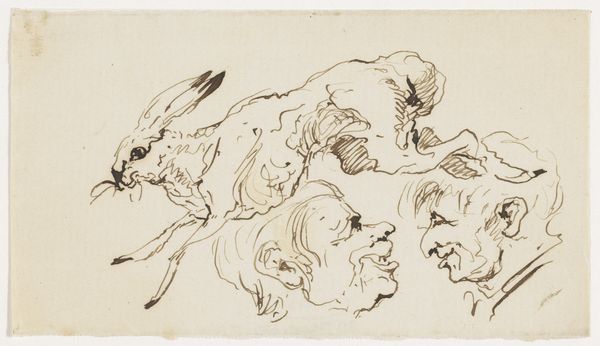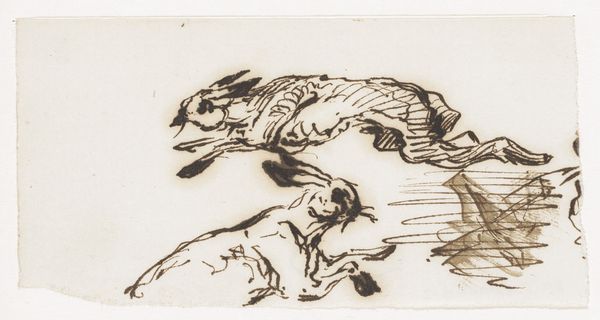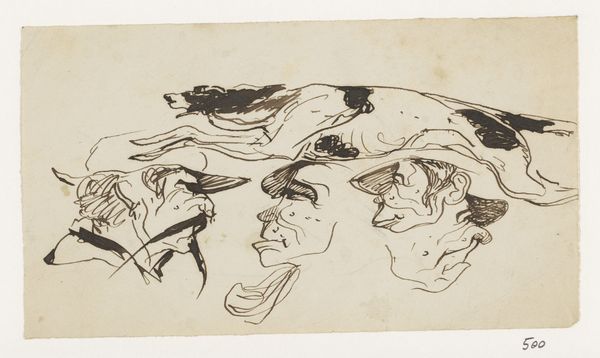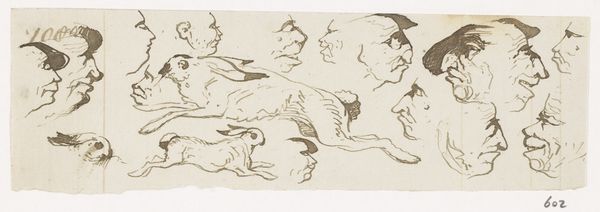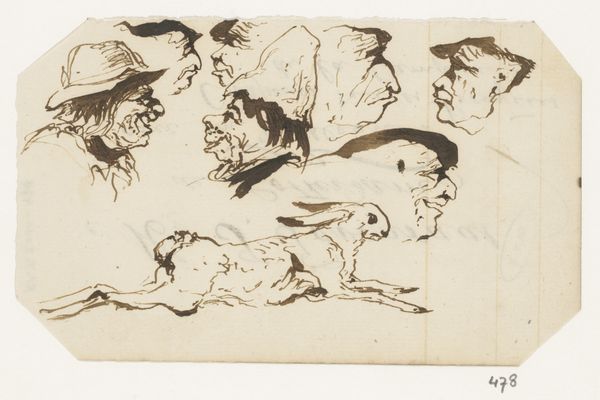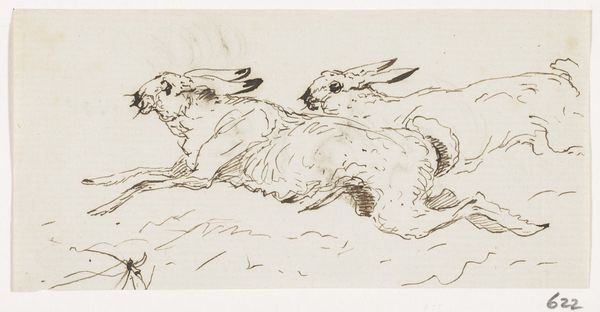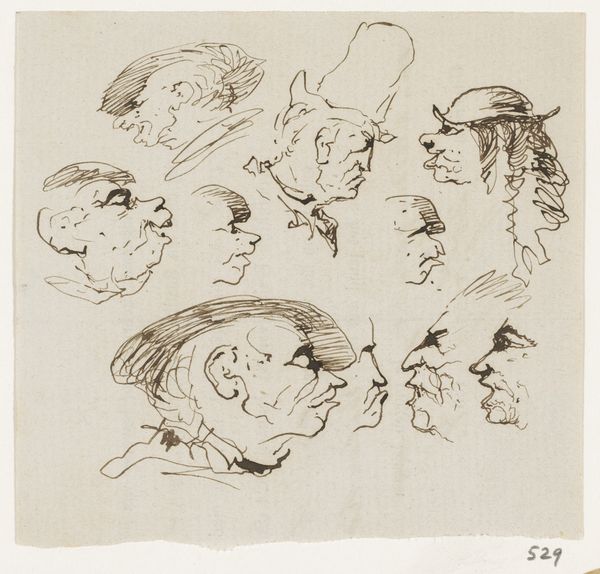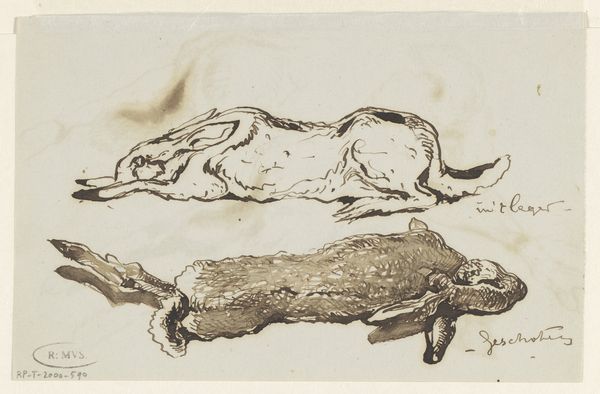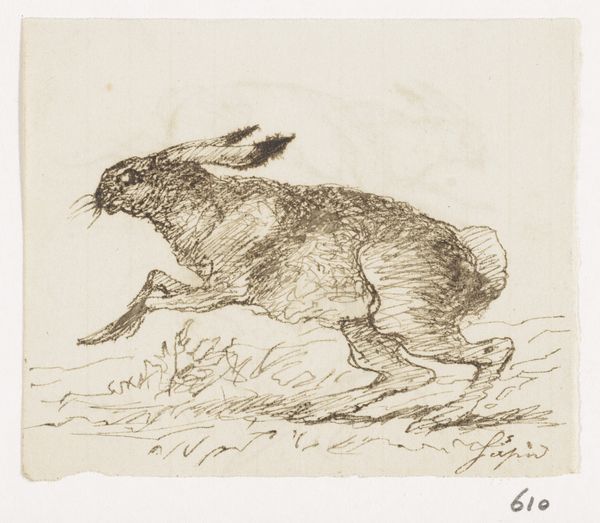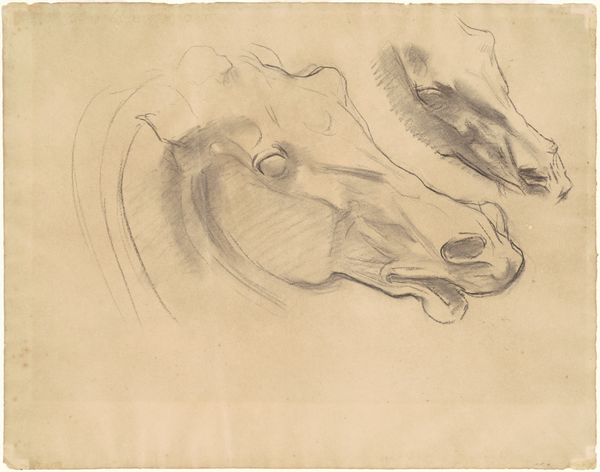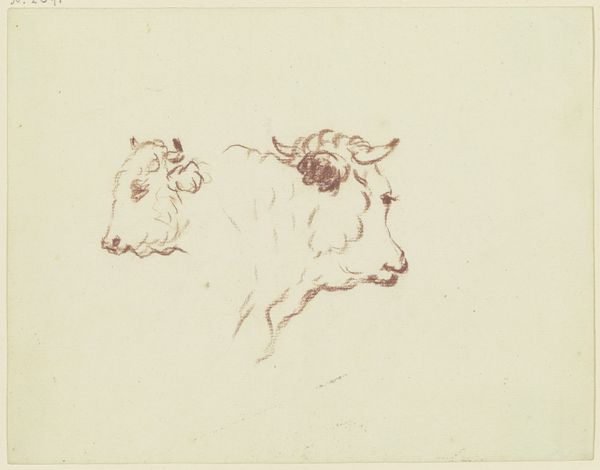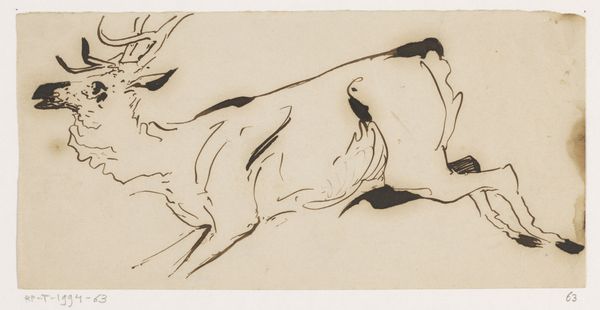
drawing, ink, pen
#
portrait
#
drawing
#
ink drawing
#
figuration
#
ink
#
pen-ink sketch
#
pen
Dimensions: height 76 mm, width 98 mm
Copyright: Rijks Museum: Open Domain
Editor: Here we have "Hare and Three Heads," a pen and ink drawing made sometime between 1840 and 1880 by Johannes Tavenraat. It’s a curious composition; the juxtaposition of a fleeing hare with these almost grotesque facial profiles... It’s striking. What do you see in this piece? Curator: I see a fragmented narrative, a visual riddle steeped in symbolic language. The hare, an ancient symbol of fertility, timidity, and the lunar cycle, races above three stark, almost caricatured heads. The tension lies in this contrast, doesn't it? Editor: Definitely. Is Tavenraat trying to say something about human nature by placing it beneath the animal world like this? Curator: Perhaps. Or consider it a commentary on mortality. The fleeting nature of life symbolized by the hare in flight, juxtaposed against the fixed, almost death-mask quality of the heads below. Each head, a unique profile, a contained story... what are they remembering? What stories do they have? The quickness of the pen strokes also gives life to this idea of fleeting. Editor: I see it now. There's a kind of urgency in the lines. Like he's trying to capture something that's fading. The hare as this kind of metaphor is powerful. Curator: And notice the simplicity of the medium. Ink, the carrier of words, now used to depict figures frozen in thought, or perhaps devoid of it altogether. Is it the barest minimum to say the most possible? It speaks to a core part of us, how the symbols affect our remembering. Editor: It's funny, I came in thinking it was just an odd sketch, but it's really much more layered than I initially thought. Curator: Exactly. Visual language is built to be explored over time. Tavenraat leaves us clues.
Comments
No comments
Be the first to comment and join the conversation on the ultimate creative platform.
